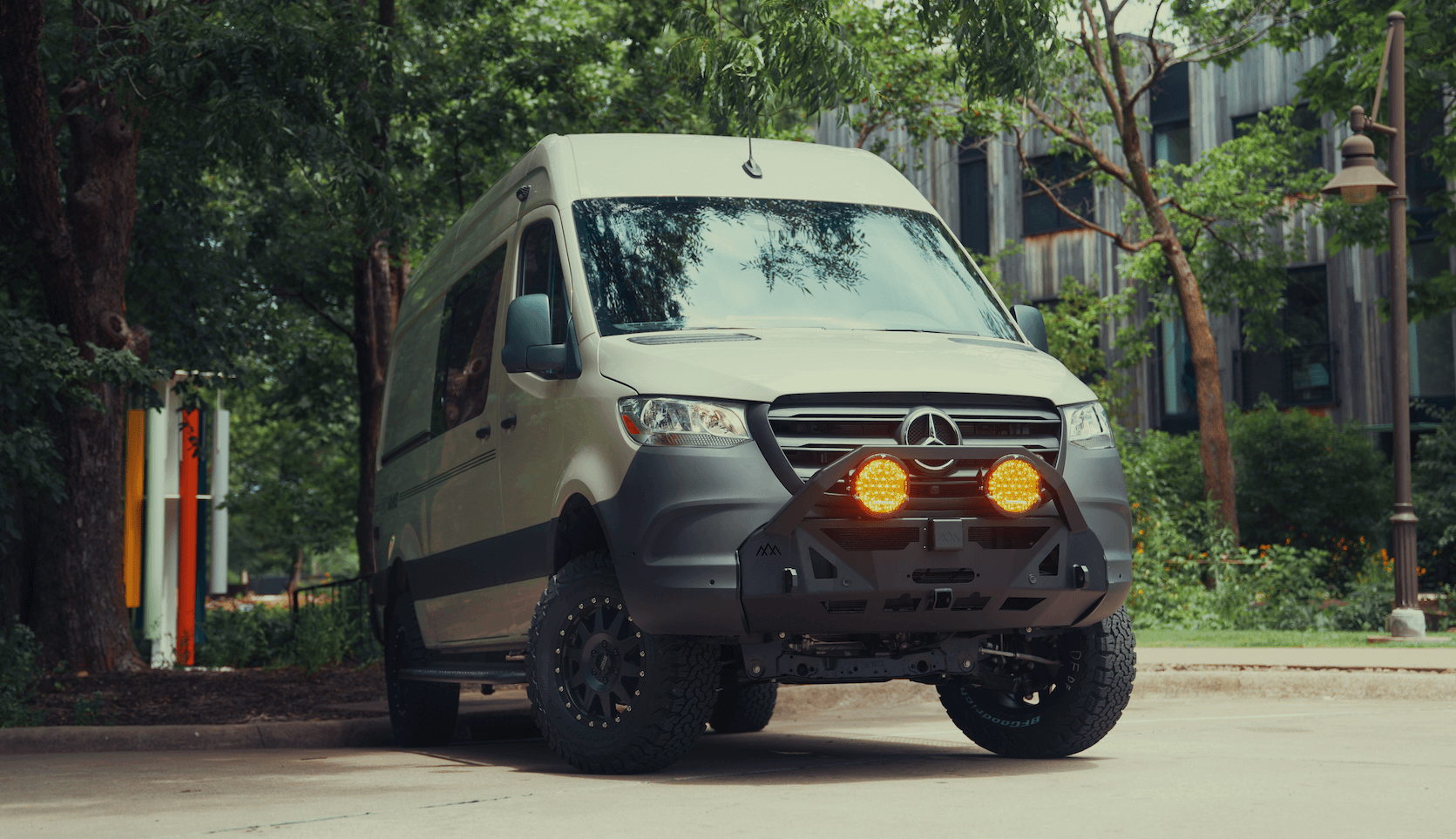Recreational Vans

A roof deck on a van or overland rig changes how the vehicle carries weight. The thin outer skin and factory roof ribs were designed for weather protection, not foot traffic or a lounge platform. Roof reinforcement for deck applications means creating a load path that moves weight away from the sheet metal and into structural members the body can actually support.
Strong roof systems begin with clear goals. Is the deck for viewing and light use, or is it a full lounge with chairs and storage. Will it support static loads only or moving people and gear while the vehicle is parked on uneven ground. The answers drive engineering choices that protect the body shell, preserve handling, and maintain weatherproofing.
Every deck must handle a mix of forces:
The roof skin and ribs spread force over a broad area but can oil can under point loads. Reinforcement converts point load into area load and then into a frame supported by pillars and hard points. When a deck is rated at a certain capacity, that rating should reflect worst case conditions including quick shifts in weight, emergency braking, and gusting winds.
Safe designs tie into strong members. On modern vans those include roof bows, side rails, and pillar zones that connect down to the chassis through the body in white. Backing plates inside the roof increase bearing area and prevent fasteners from pulling through. Outside, a perimeter frame spreads load to multiple points so no single rib carries the show.
Materials define strength, stiffness, and noise characteristics. Aluminum frames keep weight down and resist corrosion. Steel components excel where compact size and high strength are required but need coating and isolation from dissimilar metals. Composites like aluminum honeycomb or glass reinforced panels make quiet, stiff walking surfaces with excellent weight to stiffness ratios.
Fasteners and adhesives are just as important as the frame. Structural rivets or bolts with large backing plates create reliable clamp force. Closed cell gaskets and polyurethane sealant isolate vibration and stop water paths. Where adhesives are specified, surface prep and cure windows determine bond strength. Every hole must be sealed twice at the fastener and at the skin to avoid capillary leaks.
Use corrosion resistant hardware and isolate dissimilar metals with nylon washers, paint, or tape. Sealant should be tooled to a smooth fillet so water sheds away from holes. After installation, a quality topcoat protects exposed edges and cuts. Annual inspection keeps minor nicks from becoming corrosion sites.
Design begins with a weight budget. A light deck that carries two people may need less reinforcement than a broad patio style platform with storage. Weight high on the vehicle raises the center of gravity and can affect handling, so keep mass tight to the roof and distribute it evenly. Low noise matters as well. Stiff panels and felt lined interfaces stop drumming at highway speed.
Three practical checkpoints guide a safe build:
A well built deck should not whistle, rattle, or boom. Rounded edges, flush mount fasteners, and stable panel spans reduce noise. Weight positioned near roof rails limits body roll. Proper sealing prevents wind from pumping air into the roof cavity, which can create buffeting.
At this point the principles are clear. The roof is thin. Loads must move into strong members. Materials must resist weather, vibration, and corrosion. Testing verifies the rating, and maintenance keeps it that way. Those fundamentals apply whether the deck is a compact viewing pad or a full lounge platform.
Now, if you want those fundamentals translated into a finished solution, professional integration matters. A shop that builds adventure vans daily will know which factory hard points are trustworthy, how to keep headliners and harnesses protected during install, and which coatings survive real seasons in the sun and rain. That experience saves time and prevents costly mistakes like hidden leaks or resonance that spoils quiet travel.
OZK Customs builds complete adventure rigs in Fayetteville Arkansas with attention to structure, sealing, and serviceability. Our team designs walkable decks that tie into reinforced roof interfaces, match the vehicle platform, and leave you with a quiet, weather tight cabin. We engineer the load path, select materials that balance strength and weight, and finish with coatings that resist corrosion and UV exposure. When your build is done, we walk you through care and inspection so the deck stays safe year after year.
Ready to plan a walkable platform. Tap Recreational vans and see our approach across full builds and upfits.
Need a roof deck integrated with cabinets, power, and lighting. Explore Custom build vans to understand our design to delivery process.
Want a finance friendly platform to start your journey. Check Mainstream vans for book value platforms and upgrade paths.
What we do
We do not rent vehicles or sell DIY kits. We build purpose fit vans and overland rigs that are quiet, durable, and ready for travel. If you want a roof reinforcement for deck that feels factory and stands up to real miles, submit the form and let us spec your system.
Ready to add a safe, quiet, walkable rooftop deck to your van. Schedule a consult and our team will spec materials, structure, and sealing for your platform. Submit the form and let OZK Customs turn an idea into a tested, road ready system.
ADDRESS:
6159 E Huntsville Rd, Fayetteville, AR 72701
PHONE:
(479) 326-9200
EMAIL:
info@ozkvans.com